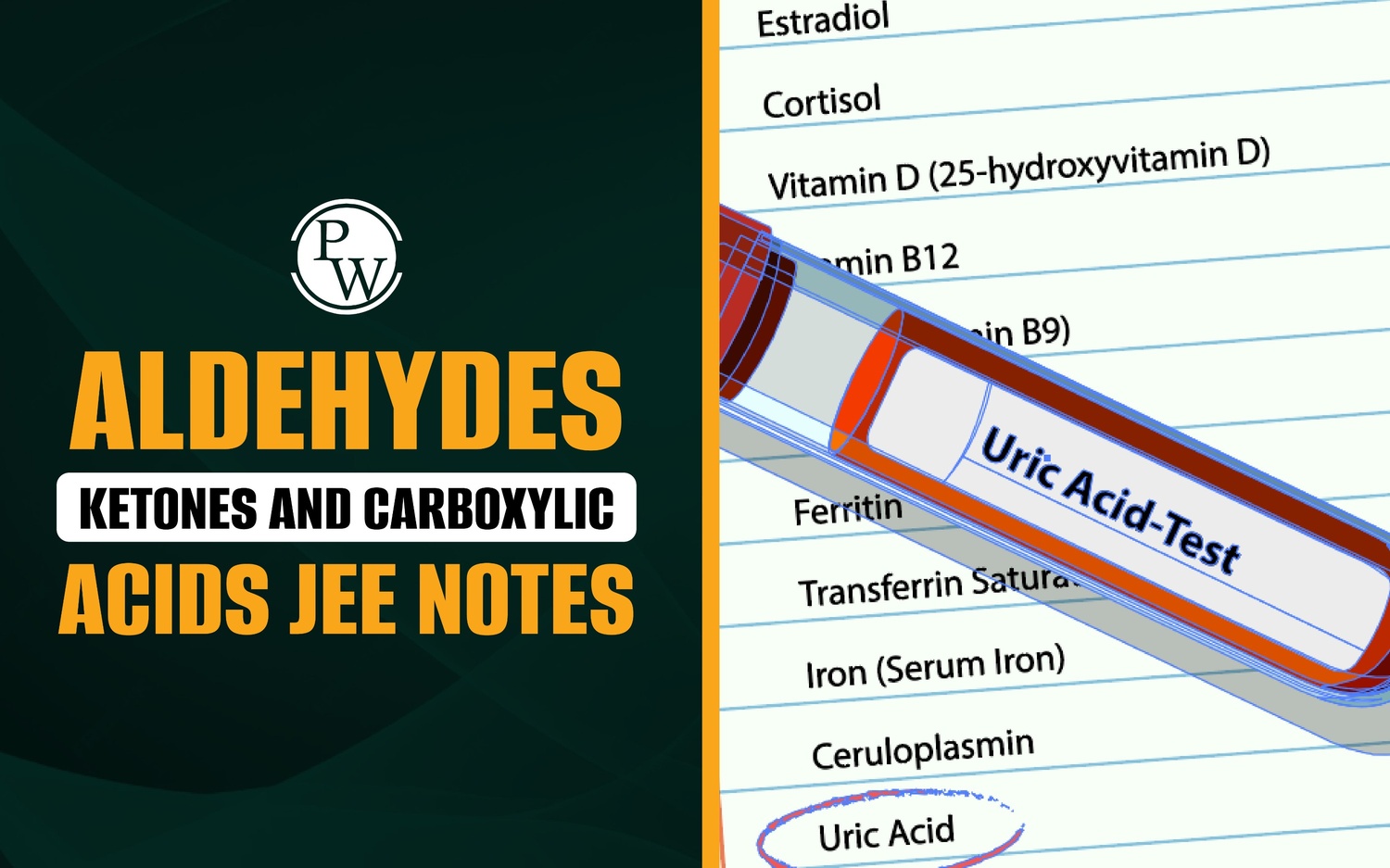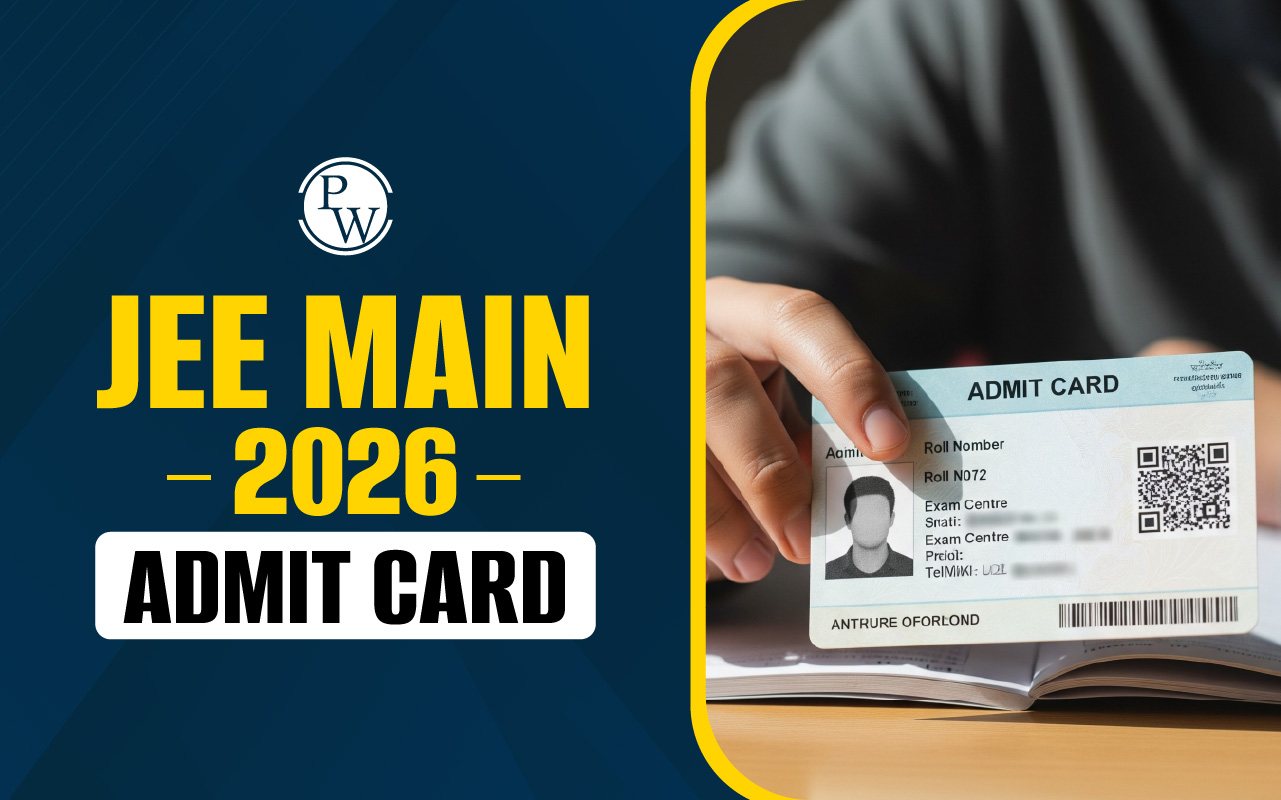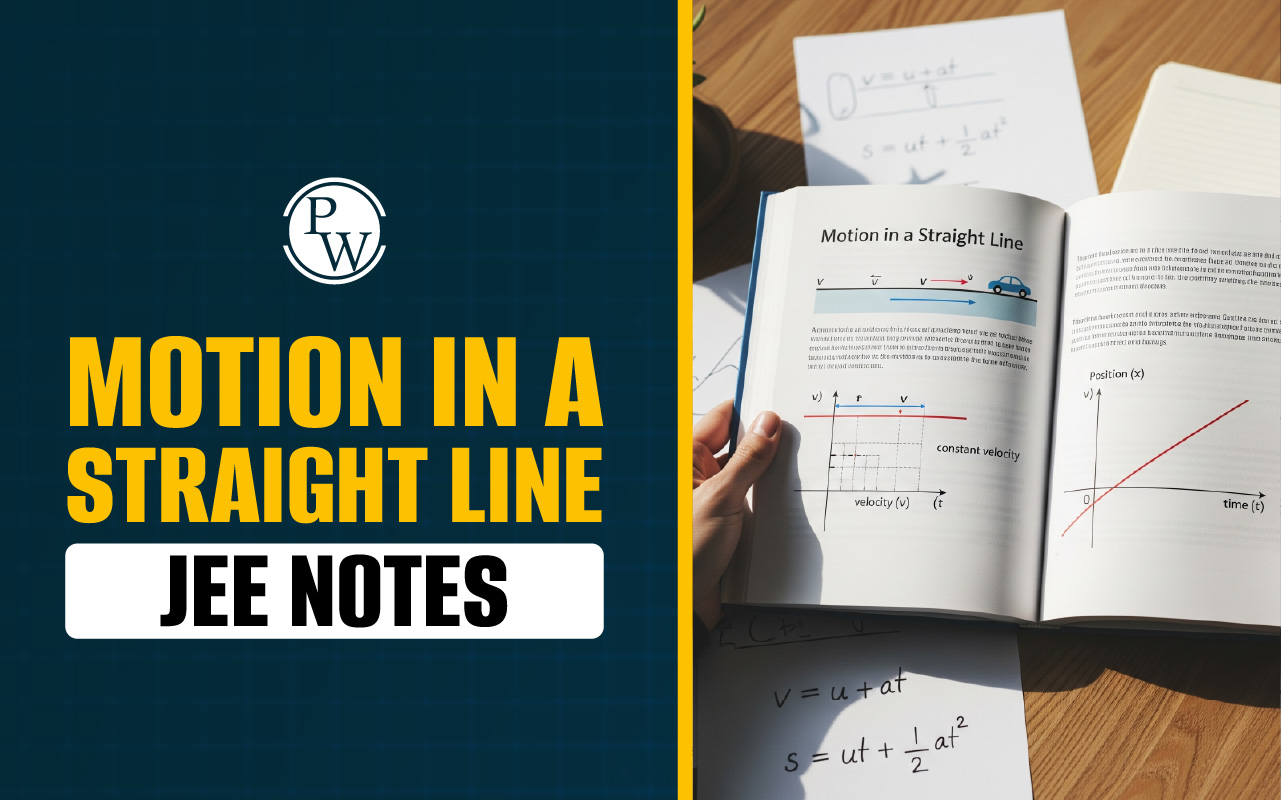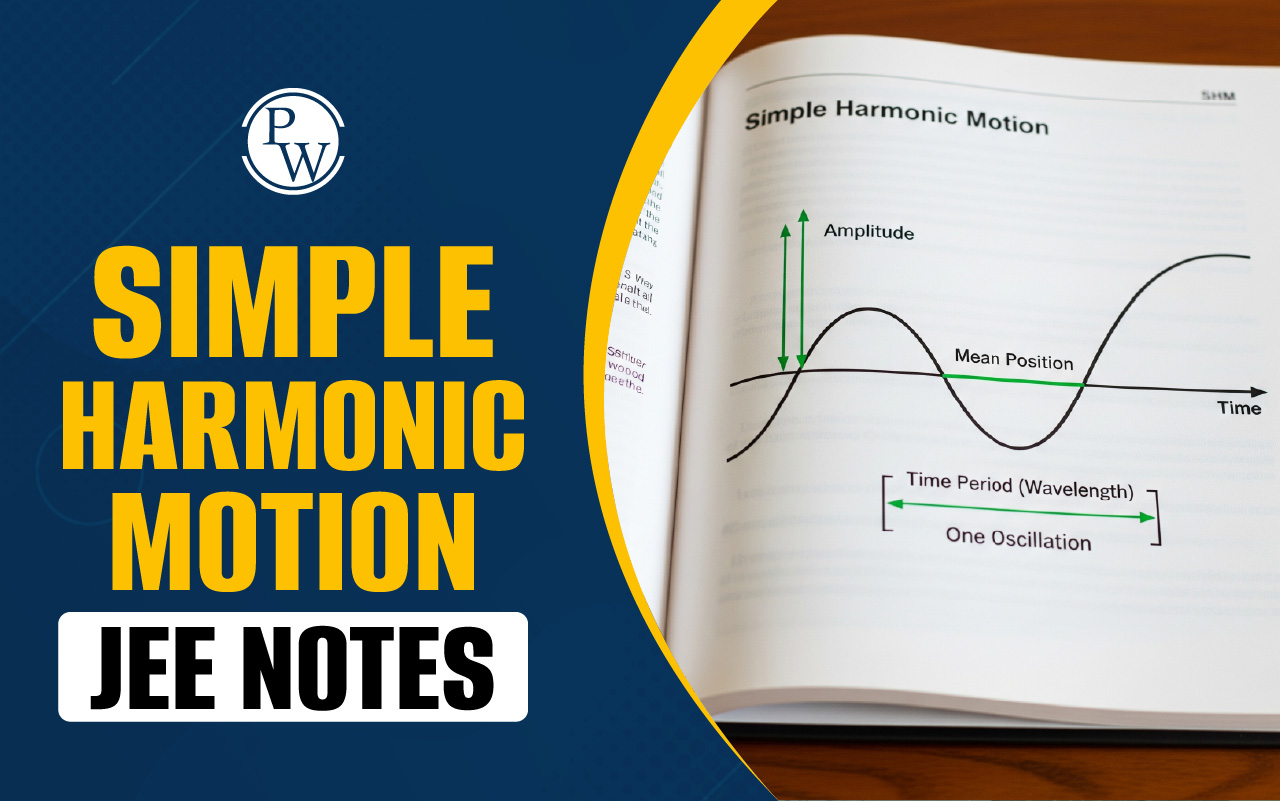
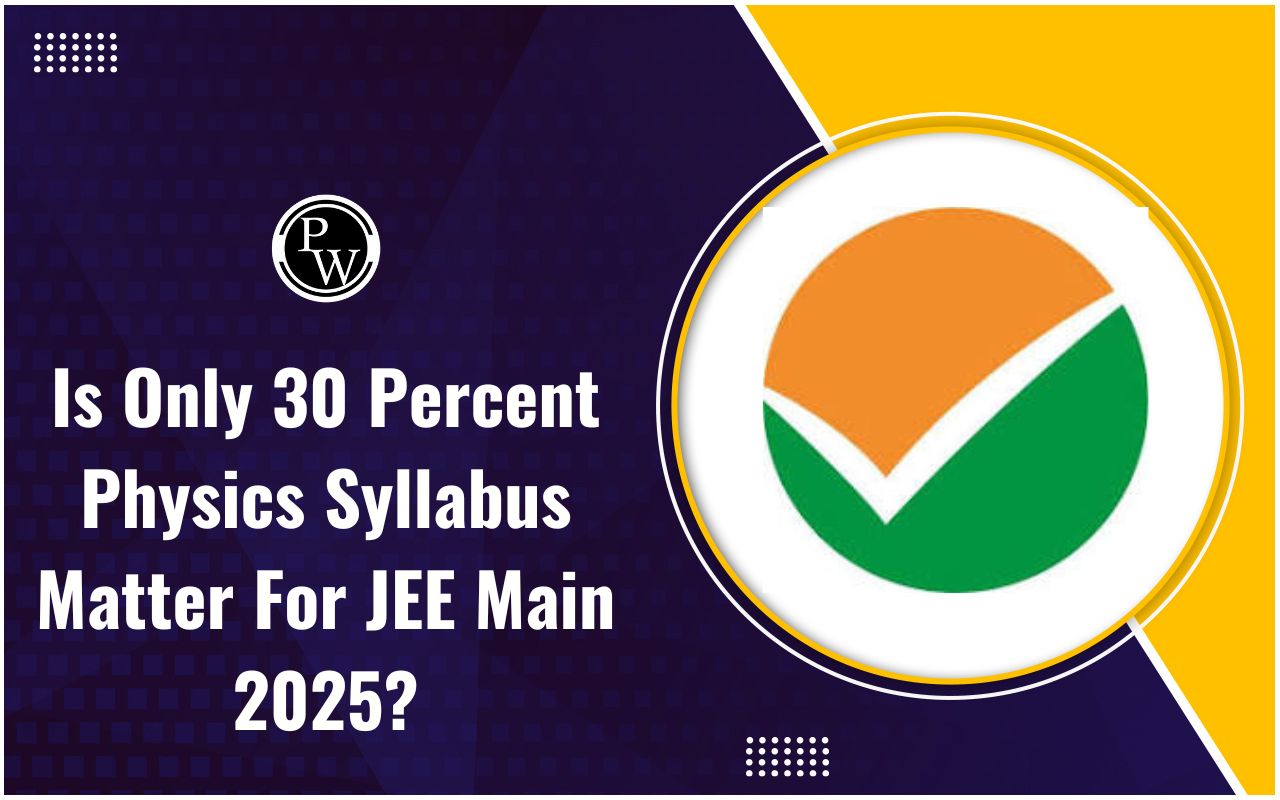
Is only 30 percent physics syllabus matter for JEE Main 2025?: Physics is one of the most important subjects in JEE Main, known for testing both the conceptual understanding and problem-solving skills of applicants. With less than a month left for the JEE Main 2025 Session 1 examination, students are under immense pressure to revise effectively and focus on high-scoring topics.
It goes without saying that covering the complete JEE Main Physics Syllabus 2025 is beneficial; however, previous year's trend shows that many questions repeated in the past exams were based on similar topics that were around 30% of the syllabus. So, does that mean you can achieve good marks in the Physics section by focusing on just 30 percent of the topics? To find out more about "Is Only 30 Percent Physics Syllabus Matter for JEE Main 2025?" keep on reading.
Is Only 30% Physics Syllabus Matter for JEE Main 2025?
After analyzing the past year's trend, it can be seen that the majority of questions in the Physics section were asked from a similar set of concepts, which account for around 30% of the complete syllabus. This indicates that focusing on these high-weightage topics can greatly improve the chances of scoring well. While it is important to cover the entire syllabus for a well-rounded understanding, prioritizing these key areas ensures better preparation and efficient revision in the final stretch.
How Much JEE Main Physics Syllabus 2025 Is Important? - High Scoring Physics Topics
The JEE Main Physics syllabus covers a broad range of topics, but understanding which ones carry more importance can make your preparation more effective. Let's check out how much JEE Main Physics Syllabus 2025 is important and the topics that can contribute greatly to your score:
1. Dimensions and Units of Physical Quantities
- Understanding Dimensions and Units : Familiarize yourself with the dimensions and units of various physical quantities, including popular constants.
- Basic Mathematical Operations : Focus on basic operations such as addition, subtraction, and multiplication of vectors.
- Parallax Method : Study the parallax method with examples from NCERT.
- Base Units for Dimension Calculation : Learn the process of changing base units and how to calculate dimensions accordingly.
- Error Equation Conversion : Understand how to convert equations into error equations for more accurate calculations.
- Instruments and Experiments : Focus on basic experiments involving Vernier/Screw Gauges, simple pendulums, and the projection of vectors on other vectors.
2. Kinematics
- 1D Motion with Constant Acceleration : Review the basics of 1D motion, focusing on concepts like relative motion, collisions, and the meeting point of objects.
- Projectile Motion : Study the basics of projectile motion, including formulas for time of flight (T), maximum height (hmax), and the equation of trajectory.
- 1D Motion with Variable Acceleration : Understand motion with variable acceleration using calculus, and practice applying equations like v-t, a-t, and v-x curves.
- Motion under Gravity : Focus on real-life examples like a ball thrown upward, downward, or released from a moving lift, along with calculations based on gravity.
3. Newton’s Laws of Motion
- Equilibrium and Forces : Learn the basic questions on equilibrium involving tension, normal force, and the motion of bodies on rough surfaces.
- Atwood Machine : Understand the Atwood machine concept without complicated constraints.
- Rough Surface Motion : Study motion on both horizontal and inclined planes, focusing on friction and the application of Newton’s Third Law (Action-Reaction).
- Spring and Block Systems : Practice problems related to spring cutting and combinations (kx) and blocks pulled or pushed at an angle on rough horizontal surfaces.
- Net Contact Force : Focus on net contact forces, especially in friction-related problems, including examples from NCERT.
4. Work, Energy, Power, and Circular Motion
- Work Done by Variable Force : Study the work done by a variable force, using equations like W = ∫Fdx or the Work-Energy Theorem.
- Power and Energy Conservation : Review basic questions on power (P = F.V) and conservation of mechanical energy, focusing on applications in gravity and spring systems.
- Work-Energy Theorem with External Forces : Understand the work-energy theorem and its applications, particularly in the presence of external forces like friction.
- Bullet and Ball Collisions : Practice questions on energy loss during collisions, focusing on concepts like kinetic energy (KE) and conservation of momentum.
5. Center of Mass and Conservation of Momentum
- Center of Mass (CoM) Calculations : Learn to calculate the center of mass for different objects and systems, including parts of objects.
- Applications of Conservation Laws : Understand the concepts of CoM = 0, Vcm = 0, and acm = 0 in various scenarios.
-
Collisions:
- 1D Collisions : Focus on elastic, inelastic, and general collisions, including interactions with walls.
- 2D Collisions : Study 2D collisions on smooth surfaces.
- Explosion Problems : Understand the explosion of a bomb or object thrown at rest.
- Impulse : Learn the concept of impulse as impulse = ∫F dt (area under force-time curve) = ΔP and practice related problems.
- CoM of Rods : Understand the calculation of the center of mass of rods using f(x) functions.
6. Rotational Dynamics
- Moment of Inertia (MI) Calculations : Learn to calculate the moment of inertia for various objects such as spheres, cylinders, discs, rods, and more.
-
Rolling Motion
:
Study rolling motion, focusing on both horizontal surfaces and inclined surfaces.
- KE of Rolling Objects : Understand the total kinetic energy (KE) in rolling motion, including translational and rotational components ( KE = KE_translational + KE_rotational ).
- Torque and Equilibrium : Study torque, equilibrium conditions, and applications in rotational dynamics.
- Radius of Gyration : Understand the concept of the radius of gyration and its importance in rotational motion.
- Applications of Fixed Axis Problems : Learn to apply rotational dynamics to problems involving fixed-axis rotation.
7. Simple Harmonic Motion (SHM)
- Basic Kinematic Questions : Practice basic questions on SHM, including force, acceleration, and velocity equations like F = -kx, a = -ω²x, v = ω√(A² - x²).
- Energy in SHM : Focus on energy formulas in SHM, such as the potential energy (PE) and kinetic energy (KE) of the oscillating particle.
- Spring-Mass System : Study variations in spring-mass systems, including combinations and time/phase calculations using the circle method.
- Superposition of SHM : Learn to add SHM waves using the phasor method, especially when the oscillations have the same frequency.
- Physical Pendulum : Focus on the formula and application of simple and physical pendulums in SHM problems.
8. Waves and Sound
- Progressive Waves : Study the basic concepts of progressive waves, focusing on their comparison and determination of quantities such as amplitude, frequency, and wavelength.
- Sonometer Wire & Organ Pipes : Understand the application of the sonometer and organ pipes, especially in the context of harmonics and overtones.
- Sound Intensity and Power: Learn the formulas for average intensity, average power, and decibel levels, and practice related calculations.
- Beats: Study the phenomenon of beats, including the basic formula and determination of unknown frequencies in wave interference.
9. Properties of Solids and Liquids
- Young's Modulus : Understand the applications of Young's Modulus of elasticity in different materials and systems.
- Bulk Modulus : Study the formula for bulk modulus and its relationship with Young's modulus and shear modulus.
- Pascal’s Law : Learn the applications of Pascal’s Law in fluid mechanics.
- Bernoulli's Theorem : Focus on Bernoulli’s Theorem and its applications, especially in fluid dynamics and pressure differences.
- Surface Tension : Study the effect of temperature and impurities on surface tension, particularly in capillary tubes.
- Viscosity : Understand the effect of temperature on viscosity and the floating behavior of objects in a combination of liquids, with formulas like F_up = ρgV.
10. Heat and Thermodynamics
- Temperature Scales and Conversion : Learn about different temperature scales (Celsius, Fahrenheit, Kelvin) and conversion formulas.
-
Heat Equations :
- Q = msΔT (specific heat equation for temperature change).
- Q = mL_f (latent heat of fusion) and Q = mL_v (latent heat of vaporization).
- PV = nRT: Study the ideal gas law and its applications in thermodynamic processes.
- Sound in Gases : Understand the formulas for the speed of sound in gases and the factors that affect it.
- Heat Conduction : Learn about the series/parallel combination of rods and heat conduction principles.
- Rate of Heat Loss & Cooling : Study the rate of heat loss in objects and the application of Newton's Law of Cooling.
- First Law of Thermodynamics : Understand the first law (ΔU = Q - W) and its applications in various standard processes (isothermal, adiabatic, isobaric).
- Mean Free Path : Learn about the mean free path and mean free time of gas molecules.
- Thermal Expansion : Study the basic applications of thermal expansion in solids, liquids, and gases.
11. Electrostatics
- Electric Field & Potential : Learn how to calculate electric fields and potential for discrete point charges.
- Coulomb’s Law : Understand the basic applications of Coulomb’s Law for two-point charge systems and related problems.
- Ring and Charged Wire : Study the electric field calculations for a charged ring and a charged wire.
- Electric Flux & Gauss's Law : Learn how to calculate electric flux and apply Gauss’s Law to solve problems.
- Charge Distribution : Understand electric field calculations for solid charge distributions, such as spherical and cylindrical charge distributions.
- Dipoles : Learn how to calculate the electric field and potential due to electric dipoles, as well as the dipole moment.
-
Capacitors :
Study the motion of charged particles between plates of a charged capacitor.
- Learn the properties of electric field lines and their relation to the potential.
- Understand the combination of capacitors and the effect of dielectric materials.
- Study the calculation of voltage (V), electric field (E), and capacitance in capacitors.
- RC Circuits : Learn about the basics of RC circuits and how to solve problems involving multiple resistors and capacitors.
12. Capacitors
- Combination of Capacitors : Study the combination of capacitors in series and parallel, with an emphasis on the effects of partial dielectric variations on capacitance.
- Voltage (V), Electric Field (E), and Potential Difference : Learn how to calculate the voltage, electric field, and potential difference between the plates of a charged capacitor.
- RC Circuits : Understand the basics of RC circuits and how to handle problems involving multiple resistors and capacitors.
- Heat Loss in Capacitor Circuits : Study how heat is dissipated in charged capacitor circuits and solve related problems.
13. Current Electricity
- Wheatstone Bridge: Learn how to calculate the equivalent resistance (Req) using the Wheatstone Bridge method and solve basic problems.
- Heat Loss in Resistances : Study the heat loss in resistances connected with a battery and understand the formulas involved.
- Nodal Analysis in DC Circuits: Learn the basics of nodal analysis for DC circuits, including how to calculate current (i) and voltage (V) in series and parallel circuits.
- Galvanometer Conversion : Understand how a galvanometer can be converted into an ammeter and voltmeter, including the half-deflection method.
- Meter Bridge Experiment : Learn the principles behind the meter bridge experiment and how it is used to measure resistance.
- Effect of Temperature on Resistivity: Study the effect of temperature on the resistivity of materials, and solve problems using the formula Q = f(i, dt).
- Verification of Ohm’s Law : Understand how to verify Ohm’s law experimentally and interpret I-V graphs for both ohmic and non-ohmic materials.
- Battery Combination : Learn about different battery combinations and their applications in circuits.
14. Magnetism and Magnetic Properties of Materials
- Bar Magnet : Study the calculation of the dipole moment of a bar magnet, along with the magnetic field along the axis and equatorial plane.
- Magnetic Properties : Learn about the magnetic properties of materials, such as retentivity, coercivity, and susceptibility, and their temperature dependence.
- Biot-Savart Law : Understand the Biot-Savart Law and how it applies to calculating the magnetic field produced by a current-carrying wire, coil, and solenoid.
- Motion of Charged Particles in Magnetic Fields : Study the motion of charged particles in magnetic fields using the formula F = q(v × B) , and understand the concept of a mass spectrometer.
- Work-Energy Theorem in Magnetic Fields : Learn about the work-energy theorem in the context of magnetic fields and combined electric and magnetic fields, including velocity selector applications.
- Moving Coil Galvanometer : Study the principles and working of a moving coil galvanometer.
15. Electromagnetic Induction and Alternating Currents
- RLC Series AC Circuits : Learn the principles behind RLC series AC circuits, including RL, RC, and LC oscillations. Study phasor addition of voltage and current and the behavior of circuits with alternating input.
- Motional EMF : Understand the concept of motional EMF (electromotive force) and its calculation, using formulas like E = BvL (force due to moving charges).
- Power Loss in AC Circuits : Study the power loss in alternating current circuits and the related formulas.
- Mutual Inductance : Learn the principles of mutual inductance and how to calculate the induced EMF using the formula E = L(dI/dt).
- Principle of Electric Generators : Understand the working principle of an electric generator, including how a coil rotates in an external magnetic field to produce electricity.
- Transformer : Study the working of transformers and solve numerical problems related to transformer efficiency and power transfer.
- Faraday’s Law of Induction : Learn about Faraday’s Law of Induction and solve problems related to induced EMF and magnetic flux changes.
- Resonance in AC Circuits : Understand the concept of resonance in AC circuits and calculate the Q-factor (quality factor) of an AC circuit.
16. Ray Optics & Optical Instruments
- Lens & Mirror Formula : Understand and apply the lens and mirror formula, including magnification.
- Snell’s Law : Solve basic ray diagram and refraction-related questions.
- Compound Microscope & Telescope : Study the principles of image formation in microscopes and telescopes.
- Reflection & Refraction : Focus on applications of reflection and refraction in various scenarios.
17. Wave Optics
- Young’s Double Slit Experiment (YDSE) : Basic principles and problems, including path difference, minima, and maxima.
- Shape of Wavefront : Calculate wavefront shapes using Huygen’s Principle.
- Interference : Understand the resulting amplitude and intensity in interference patterns.
- Single Slit Diffraction : Study the width of central maxima and minima.
18. Modern Physics & Semiconductors
- Einstein’s Photoelectric Equation : Solve problems related to photon flux, intensity, and kinetic energy of electrons.
- De Broglie Wavelength : Learn the formula for de Broglie wavelength and its applications.
- Bohr Model : Understand the hydrogen atom spectrum, de-excitation, and the Lyman & Balmer series.
- Nuclear Physics : Basic concepts like mass defect, Q-value, and binding energy.
- Radioactive Decay : Study basic fission, fusion, and α, β decay reactions.
- Semiconductors : Learn about Zener diodes, ideal diodes, and rectifiers.
- Logic Gates : Understand the principles and applications of AND, OR, NOT, NAND, and NOR gates.
Study Material For JEE Main 2025 Preparation
Physics Wallah (PW) offers comprehensive study material for JEE 2025 , designed to help students excel in this competitive exam. The material includes detailed theory notes, practice questions, previous years’ papers, and mock tests for Physics, Chemistry, and Mathematics. Each topic is explained with clear concepts and illustrated examples, ensuring a strong foundation
Is Only 30 Percent Physics Syllabus Matter for JEE Main 2025? FAQs
Ques. How much of the JEE Main Physics Syllabus 2025 should I skip?
Ques. Can I pass JEE Mains 2025 by studying 30% of the syllabus?
Ques. Will the JEE Main 2025 Physics section be tough?





